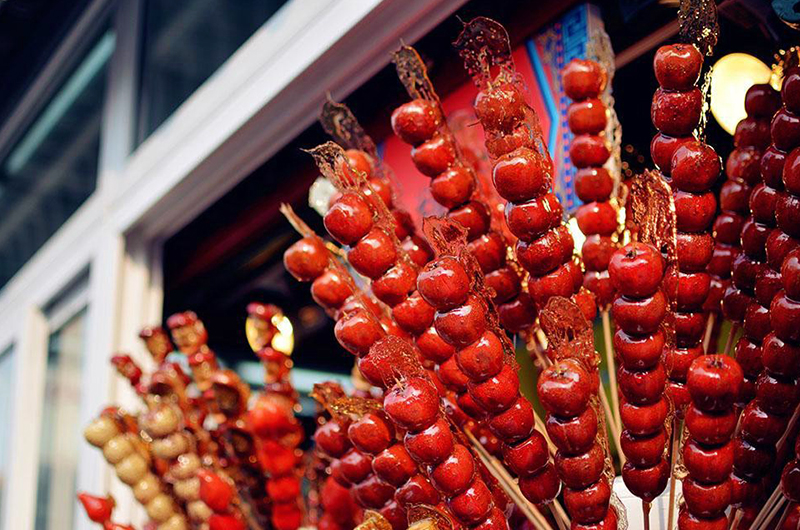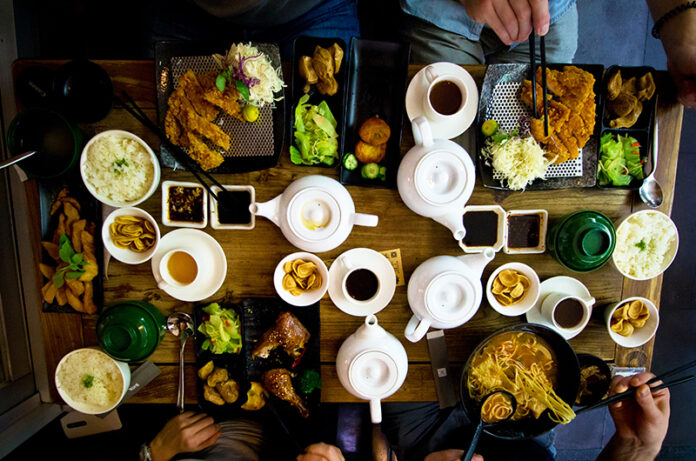The best way to get a feel for China’s diverse culinary scene is to eat your way through the country’s vibrant street food culture. Crepes, dumplings, rice balls, and even a burger are just some of the possibilities that are available from the seemingly endless array. Culture Trip has compiled a list of some of the most delicious street foods that can be found in China.
Jiaozi (Chinese dumplings)
Jiaozi, also known as Chinese dumplings, are commonly sold as street food in China. They can be stuffed with either meat or veggies. They are fashioned in the form of ancient gold ingots, which were thought to bestow fortunate outcomes upon their owners.
They are frequently prepared by shallow frying or deep frying, and when eaten, they are accompanied by a dipping sauce made of soy sauce and vinegar. After just one bite, your mouth will be flooded with a mouthful of hot, luscious broth that will reach every sensation on your tongue, resulting in an explosion of flavors. Jiaozi are consumed throughout the year, but their popularity surges on the first day of the Chinese new year.
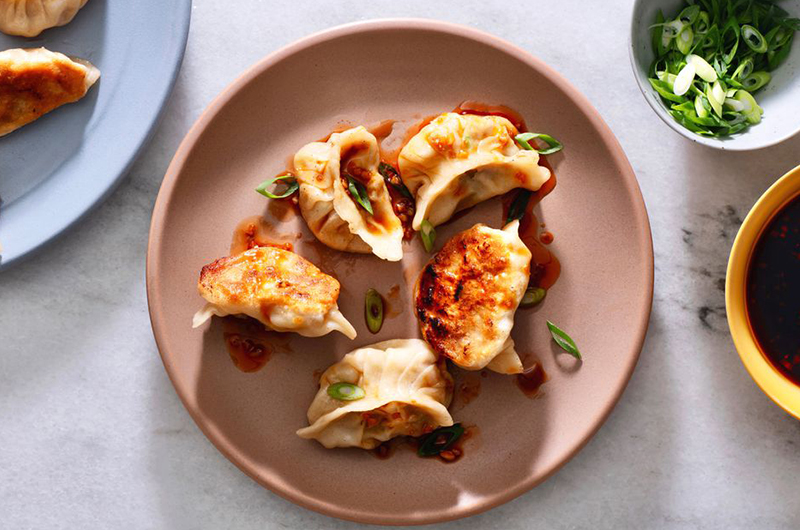
Pai gu nian gao (Pork chop with rice cakes)
In its most basic form, pai gu nian gao is a Chinese dish consisting of fried rice cakes and pork chops. While the pork chop is being brined and cooked in a mixture of oil, sugar, sauce, and ginger, glutinous rice flour is being pounded into a paste, sliced into thin, small segments, and wrapped around the pork chop before being fried. The cooking procedure produces a supper that is hot, slightly sticky, and compact. This meal hides the juicy flavors of the pork chops as well as the sauce, which is a product of the cooking process.
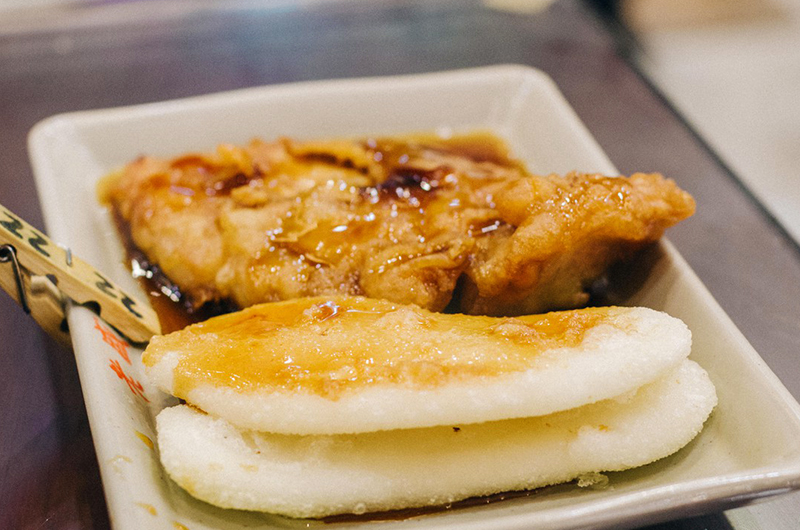
Cifantuan or ci faan (Glutinous rice balls)
Cifantuan, often spelled ci faan, are rice balls that are stuffed with a variety of flavorful ingredients from the region. The savory varieties are the ones that are most frequently encountered. Among these are aha cai, also known as pickled veggies, rousing, also known as pig floss, and youtiao (long golden-brown strips of deep-fried dough). There is also a sweet variant available, which is made out of the identical components as the savory variants, with the exception that sugar and sesame seeds are both added to it. Cifantuan are one of the most popular breakfast foods in Shanghai, and you can find them along the streets of Nanyang Lu and Xikang Lu.
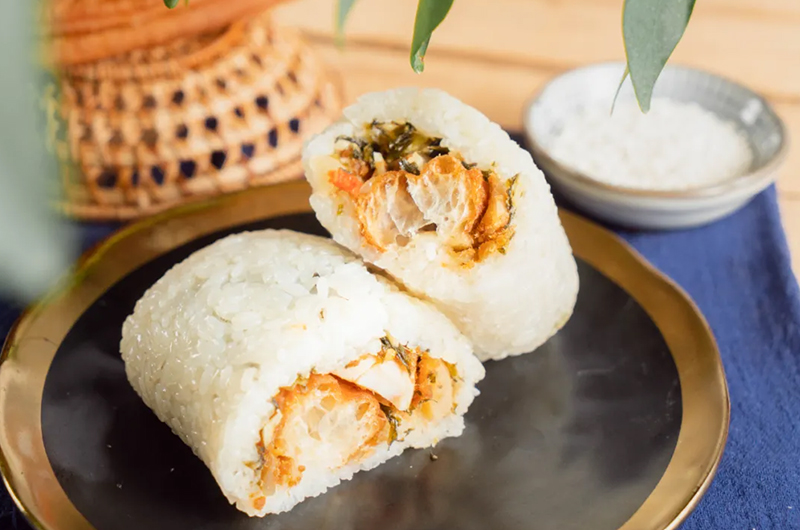
Baozi (Chinese bread buns)
Baozi are steamed buns made of dough that are typically filled with succulent meats such as barbecued pork and/or vegetables. The buns are steamed in bamboo steaming trays. They are prepared in a manner that is analogous to the manner in which jiaozi dumplings are prepared; the main difference is that baozi are made up of dough that is of a thicker consistency and contain a greater quantity of filling. Dabao (“large buns”) and Xiaobao (“little buns”) are the two most frequent sizes of baozi that are sold by street sellers. Dabao literally translates to “huge buns,” and Xiaobao means “small buns.”
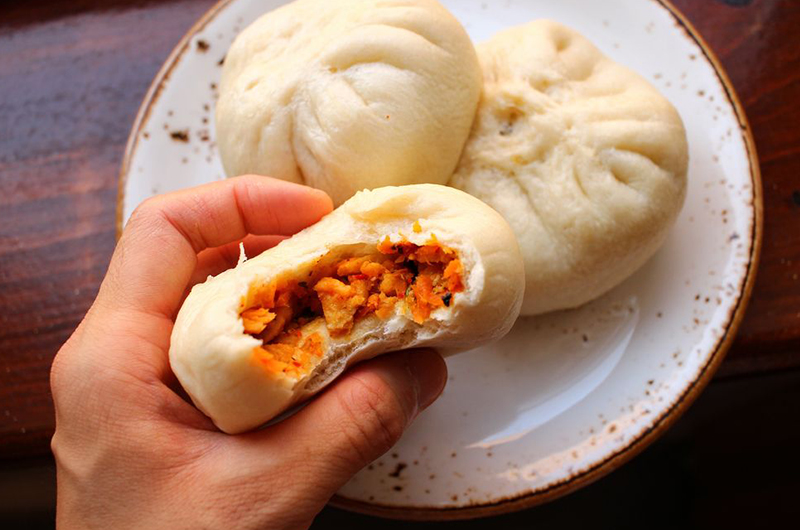
Huo guo (Hotpot)
Huo guo, which is more generally referred to as hotpot, is a dish that originated in Sichuan but has since expanded its impact across the country. Different kinds of meat, soup bases, sauces, and condiments are among the ingredients that contribute to the myriad of regional adaptations that have emerged across China over the course of time.
The Chongqing ma la hotpot is the most well-known of all the several kinds of huo guo. In this dish, Sichuan pepper is added to the simmering meat broth. It is well known to leave the tongue feeling hot and spicy after it has been consumed.
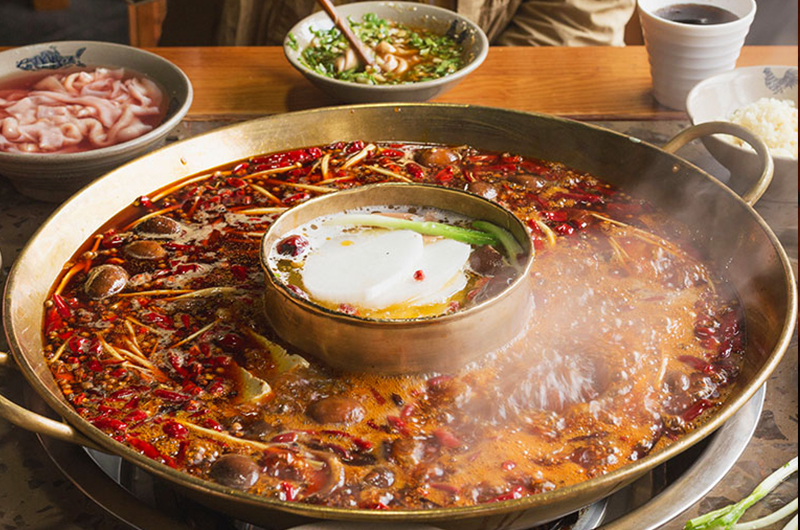
Jianbing (Chinese crepes)
Jianbing, also referred to as Chinese crepes, is one of the most popular and widely available street dishes in China that is consumed for breakfast. It is conveniently located on street corners, outside of metro stations, and in front of tourist destinations, making it easy to reach.
Although each city has its own own style of jianbing, the fundamental components are typically the same. Egg is used as the base for the dough, which is then fried on a griddle after being created from wheat and grain flour. Meanwhile, scallions, lettuce, cilantro, and a thick chili sauce are stuffed into the center of the roll.
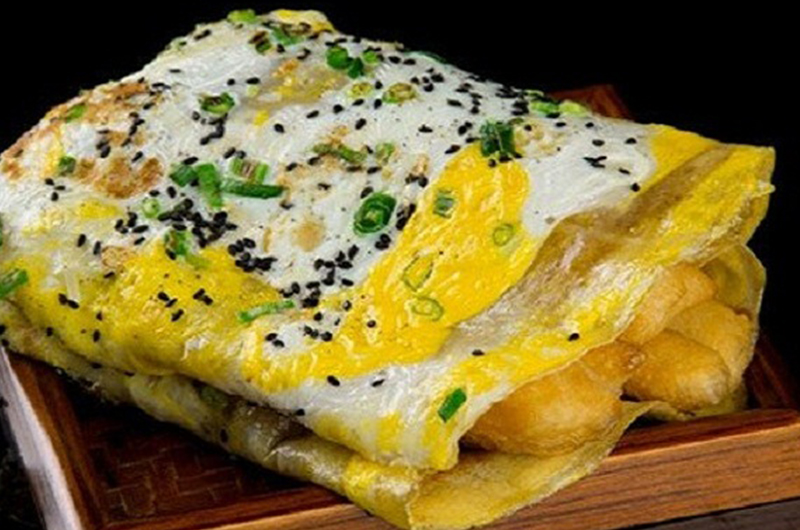
Rou jia mo (Chinese burger)
Rou jia mo is a Chinese version of the American hamburger, except the buns are thinner and flavoured with meat gravy and chilli paste – rather than ketchup and mustard. The meat is shredded rather than forming a large, circular patty. Each vendor sells rou jia mo with his or her own special filling of spiced mix. The two most common types are Shaanxi Province’s lazhirous jiamo, which is made with pork in gravy, and Ningxia Hui Autonomous Region’s yangrou roujiamo, which is made with lamb.
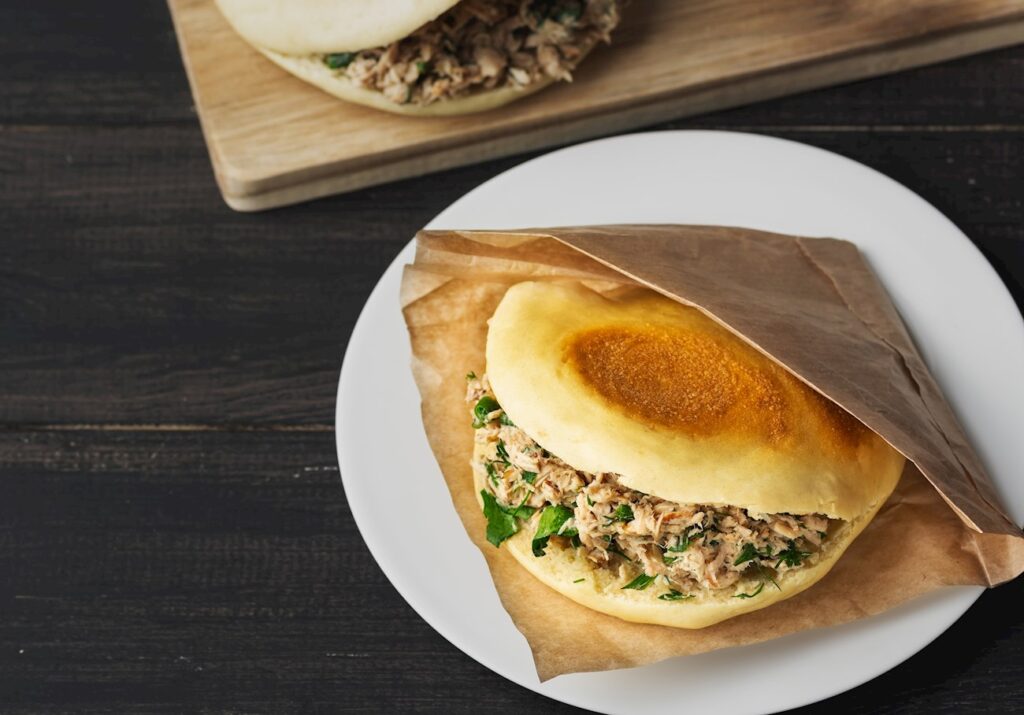
Donkey meat sandwich
Donkey meat has been considered a delicacy in China at least as far back as the Ming Dynasty, when records begin to be kept. It was essential to the survival of the guys in the military back then, therefore they ate it. Especially in Baoding, it has developed into a well-liked and widespread type of typical street cuisine that is convenient to take with you wherever you go. After the donkey meat has been shredded, it is next braised with an assortment of different seasonings and sauces. This produces a batch of meat that is flavorful and juicy, and it is used to fill the space between two buns used for sandwiches.
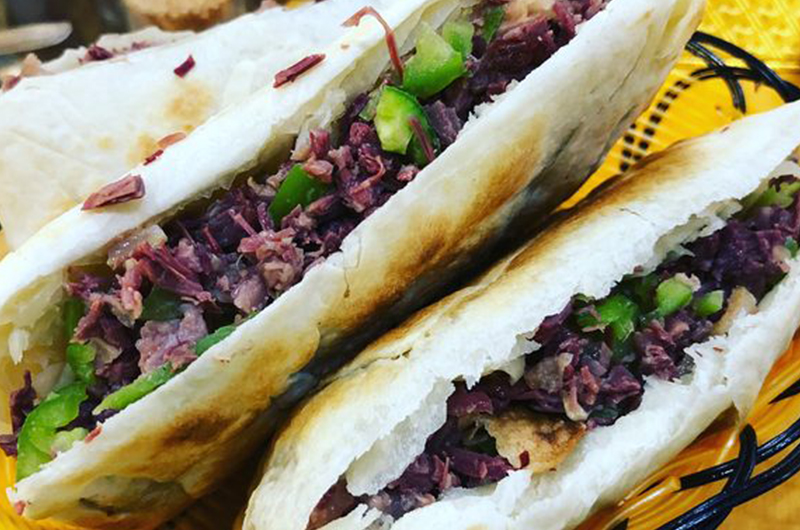
Chuan’r (Chinese kebabs)
Meat cubes are traditionally skewered onto thinly sliced bamboo sticks to make chuan’r, which are also known as kebabs. Any kinds of meat or even veggies are used. They are prepared by sprinkling the meat with salt, dried chili flakes, and cumin spice that has been pulverized, and then combining these three spices before grilling the meat that has been marinated over charcoal fires until it is fully cooked. Chuan’r can be found all over China, but during the summer months, they are most commonly consumed during night markets known as dapaidang that are held outside.
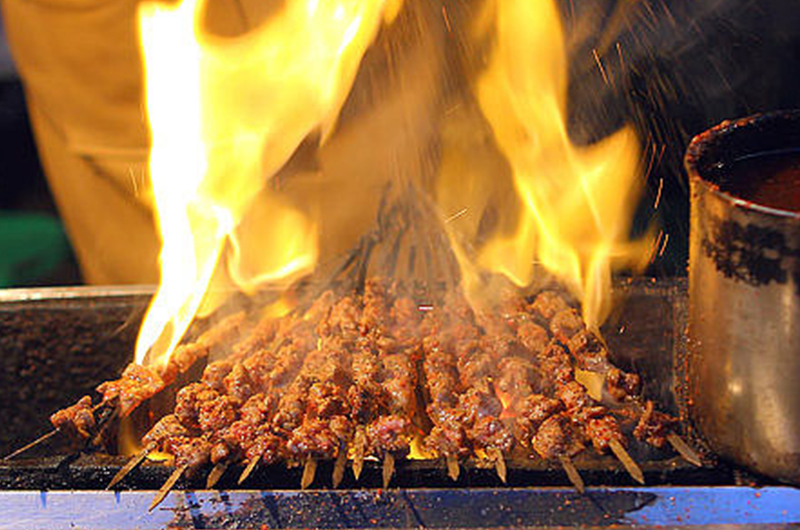
Bing tanghulu (Candied hawthorns)
Bing tanghulu are Chinese hawthorns that have been coated in a sugar syrup that has been allowed to harden and are then impaled onto long, thin sticks. They are somewhat comparable to little candy apples, but have a more sour flavor, an astringent texture, and granular consistency. Even though tanghulu can be found with various fruits like strawberries or apples, the most common and popular variety, which can be found in the center of Beijing, is filled with haws. The surface is crisp and sticky, while the interior, which is where the fruit is concentrated, is sticky, sweet, and sour.
